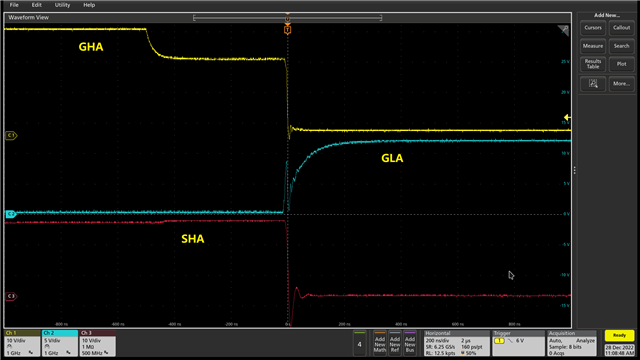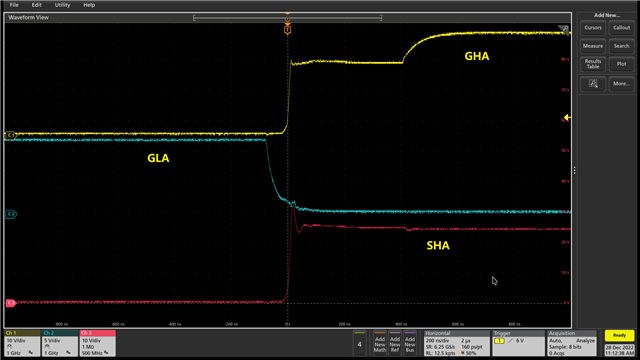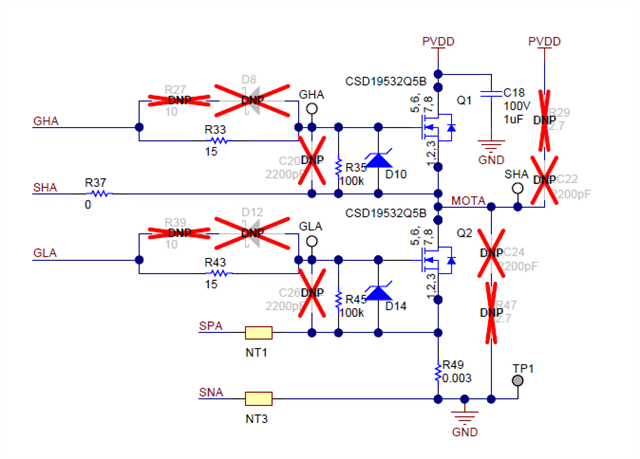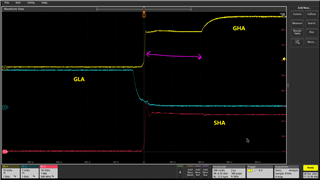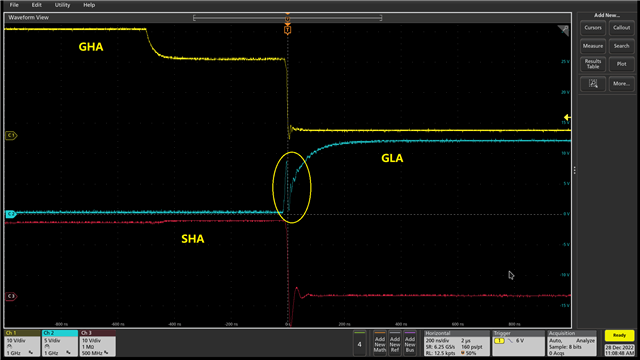Other Parts Discussed in Thread: CSD88539ND
Hi Team,
As shown in the figure below, csd88539nd is used for the MOS tube;
Schematic reference: DEMO_MD030A(001)_Sch;
The motor is a 13W BLDC motor, is this because of its insufficient drive capability? What improvement could I make?

This is the VGS waveform generated when the upper tube MOS is turned on. It has a long plateau period.
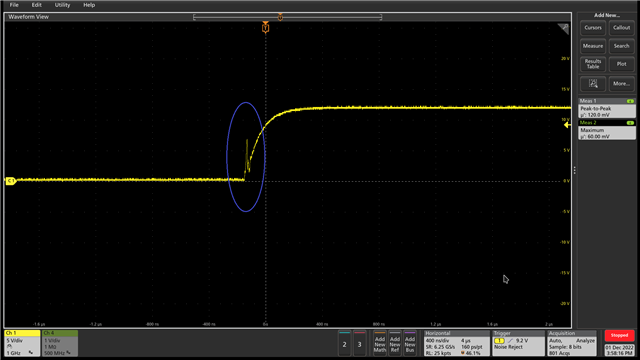
This is the VGS waveform generated when the lower tube MOS is turned on. It can only be opened with a large return channel.
Kind regards,
Katherine


